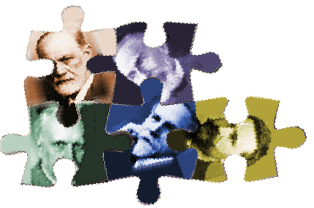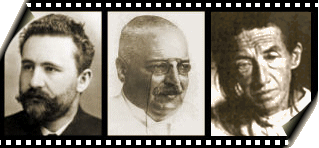
I’ve always been almost as interested in the history of the scientists as the science they pursued. And one of the pleasures of psychiatry for me was that this was an important perspective, specialty-wide. That was even more true in psychoanalysis where history is really central. So the life and times of Karl Jaspers, Emil Kraepelin, Sigmund Freud, Kurt Schneider, Adolf Meyer, Carl Jung, Harry Stack Sullivan, etc. was intermingled with the ideas they championed. In 1980, with the coming of the DSM-III and the bio-medical model, it felt like our populated past disappeared and there was only Emil Kraepelin. But worse than that, it wasn’t the Emil Kraepelin I had gotten to know. It was as if I had developed a case of the Capgras Syndrome.
The new new Kraepelin [the American neo-Kraepelinian Emil Kraepelin] felt like a cardboard cutout character from a morality play. He had a monocular biological view of mental illness – end of story. The one I used to know collaborated with Alois Alzheimer, distinguished Affective Psychosis from Thought Disorder [Dementia Praecox], looked at the clinical course of the illnesses, wrote extensive case notes, constantly revised his own work, obsessively wrote down his dreams in an attempt to understand Schizophrenic thought, was a moral zealot opposed to Alcohol and the carnal life [Syphillis], became a German Nationalist who sounded like a proto-nazi eugenics anti-semite at times in his later life, etc. etc. In other words, he was a complicated multidimensional character, among the many other such complex [and often brilliant] real people who studied mental illness and struggled with René Descartes’ mind-body dualism. He was a part of a great big story, not the story itself.

Emil Kraepelin Alois Alzheimer Auguste Deter
by Eric J. Engstrom and Kenneth S. KendlerAmerican Journal of Psychiatry. Published online: September 11, 2015.
In the last third of the 20th century, the German psychiatrist Emil Kraepelin [1856–1926] became an icon of postpsychoanalytic medical-model psychiatry in the United States. His name became synonymous with a proto-biological, antipsychological, brain-based, and hard-nosed nosologic approach to psychiatry. This article argues that this contemporary image of Kraepelin fails to appreciate the historical contexts in which he worked and misrepresents his own understanding of his clinical practice and research. A careful rereading and contextualization of his inaugural lecture on becoming chair of psychiatry at the University of Tartu [known at the time as the University of Dorpat] in 1886 and of the numerous editions of his famous textbook reveals that Kraepelin was, compared with our current view of him, [1] far more psychologically inclined and stimulated by the exciting early developments of scientific psychology, [2] considerably less brain-centric, and [3] nosologically more skeptical and less doctrinaire. Instead of a quest for a single “true” diagnostic system, his nosological agenda was expressly pragmatic and tentative: he sought to sharpen boundaries for didactic reasons and to develop diagnoses that served critical clinical needs, such as the prediction of illness course. The historical Kraepelin, who struggled with how to interrelate brain and mind-based approaches to psychiatric illness, and who appreciated the strengths and limitations of his clinically based nosology, still has quite a bit to teach modern psychiatry and can be a more generative forefather than the icon created by the neo-Kraepelinians.
“…and struggled with René Descartes’ mind-body dualism.”
Which is where JR Kantor, and BF Skinner came in… some pretty useful history and intellectual development there as well. Worth a delve!
While I look forward to reading this article, I was under the impression that the ideas of the early neo-Kraepelinians has been equally simplified. Early on, I thought they were reviving a desire to use classification to try to investigate underlying pathophysiology.
It seems that after the 1962 Food and Drug act revisions that required specific disease targets for drugs, that this notion got concretized and the reification of the identified disorders began to take hold.
I highly recommend Richard Noll’s book on this topic.